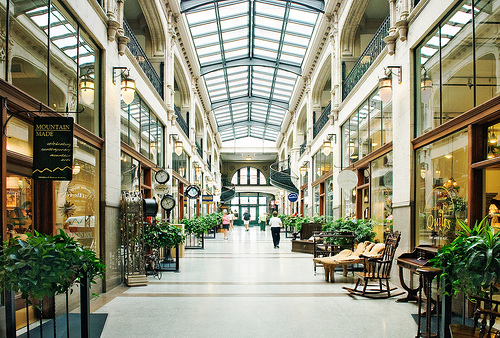Have you ever come across a piece of jewelry that not only captures your attention but also tells a story with every shimmer and hue? Think of a piece so unique that it’s impossible to find an exact replica anywhere in the world.
Now imagine that same luster and brilliance, not in a pair of earrings or a pendant but molded inside a breath-taking accent bowl?
Welcome to the captivating realm of Renaissance Glass Bowls, where artistry meets innovation.
Located in the picturesque outskirts of Asheville, North Carolina, Renaissance Glass Studio is not just another jewelry maker. They are one of first pioneers in the world of handcrafted jewelry, with a legacy that spans back to mid-1980’s.
But what truly sets them apart? It’s their signature use of dichroic glass. The studio has leader in the art glass movement for 35 years.
Dichroic glass is no ordinary glass. It’s a symphony of multiple ultra-thin layers of metal oxides like titanium, silicon, and magnesium, meticulously deposited onto the surface of the glass.
This process, carried out in a high-tech vacuum chamber, results in the formation of a unique crystal structure on the glass surface.
The outcome? A glass that plays with light in the most enchanting way, reflecting brilliant, ever-changing colors.
The journey of creating a piece of Renaissance’s dichroic glass jewelry is nothing short of magical. It begins with the careful layering of colorful dichroic glass, which is then subjected to the fiery embrace of a kiln, with temperatures soaring above 1400 degrees.
This isn’t a one-time affair. The glass is fired multiple times, often four or five, to achieve that perfect dance of light and color.
But the magic doesn’t end there. Once the glass showcases the desired brilliance, it’s time for the artists to shape this luminous canvas.
With precision and care, each piece is cut, molded, and polished, transforming the glass into exquisite pieces of jewelry or decorative bowls. Each piece, with its unique color combinations, creates a one-of-a-kind object.
Dichroic glass material has been found in some Roman glass pieces from the 4th century. This ancient dichroic glass contained colloidal gold and silver particles dispersed in the glass matrix, allowing it to display a specific transmitted color and a completely different reflected color.
Modern dichroic glass became available due to materials research by NASA and its contractors, who initially developed it for dichroic filters in US space ships.
…

…
We invite you to come by Mountain Made Gallery, in downtown Asheville, and discover a treasure trove of handcrafted dichroic glass jewelry. Whether it’s a gift for a loved one or a treat for yourself, each piece from Renaissance is a testament to craftsmanship, dedication, and the magic of dichroic glass.
Grove Arcade
One Page Ave, suite 123
Asheville, NC 28801

Mountain Made | Site Design by Sparking Design | Marketing by NC Web Diva